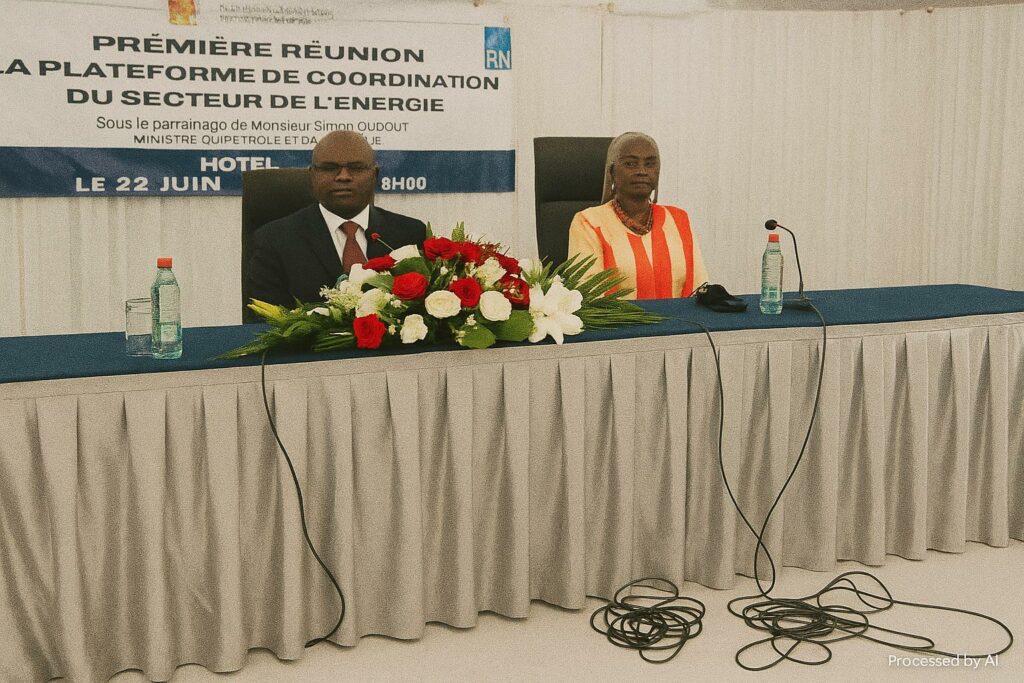Strategic Vision Beyond Megawatts
When Minister of Energy and Hydraulics Émile Ouosso convened power-sector actors in Brazzaville, the agenda ran deeper than the technicalities of adding transformers. The National Energy Pact, colloquially branded Electricity for All, is framed as a development doctrine aligned with the African Union’s Agenda 2063 and the UN Sustainable Development Goal 7. By pledging to electrify more than 800,000 households by the end of the decade, the government signals that electrons are the new currency of inclusion. Officials close to the dossier stress that reliable power is intended to irrigate every layer of the national development plan, from agri-processing corridors to digital services, thereby turning kilowatts into competitiveness.
Multilateral Orchestra and Mission 300
Congo-Brazzaville is courting a diversified coalition of lenders and know-how providers. The United Nations Development Programme has already positioned itself as the convening agency, while the World Bank is expected to appraise the project under its Mission 300 window, an instrument designed to accelerate access for three hundred million Africans. Parallel conversations with the International Monetary Fund and the Rockefeller Foundation are said to focus on concessional financing blended with catalytic grants. According to government negotiators, final endorsement is pencilled in for the margins of the United Nations General Assembly in New York, a symbolic stage that offers both visibility and diplomatic leverage.
Financing Architecture and Tariff Equilibrium
Preliminary budget estimates hover around 1.2 billion US dollars, a figure that mirrors benchmarks in the International Energy Agency’s regional access models. The financial structure privileges performance-based grants, a choice promoted by donors to mitigate fiscal exposure. Tariff policy occupies a pivotal seat within the pact. Authorities envisage a sliding scale that cushions low-income consumers while maintaining cost-reflectivity to attract private operators. Analysts from the African Development Bank observe that striking this equilibrium is vital, given that the national utility currently absorbs commercial losses estimated at twenty-five percent of generated power. A revamped regulatory commission, whose decree is expected before year-end, should institutionalise the balance between social affordability and investor certainty.
Renewables as the Backbone of Resilience
The blueprint privileges indigenous renewable resources, a stance consistent with Congo’s Nationally Determined Contribution under the Paris Accord. Hydropower remains the cornerstone, with feasibility updates under way for the Sounda and Chollet schemes on the Congo River. Solar prospects are equally high on the matrix: irradiance studies conducted by the International Renewable Energy Agency rank the Niari and Plateaux departments among Central Africa’s sunniest belts. Off-grid pathways, including mini-grids and solar home systems, are explicitly championed for settlements under one thousand inhabitants. Government engineers argue that diversifying generation not only decarbonises the grid but also cushions the volatility of fossil-fuel import bills, a pressure point accentuated during recent commodity shocks.
Socio-Economic Dividends on the Horizon
Development economists perceive electrification as a force multiplier. A World Bank econometric review of comparable projects in Ghana and Rwanda cited productivity gains of up to thirty percent for micro-enterprises within three years of connection. Congo’s pact aspires to replicate such outcomes. Health indicators stand to benefit as clinics gain refrigeration capacity for vaccines, while digital-learning platforms could narrow rural-urban education gaps. In conversations with local media, civil-society representative Marie-Claire Ondongo insisted that the psychological symbolism of switching on a light in every household is as transformative as macro-level statistics.
Governance, Inclusivity and Risk Mitigation
The pact’s designers are acutely aware that infrastructure is only as resilient as the institutions that steward it. Hence the establishment of a Coordination Platform chaired by the Ministry of Energy but populated by provincial governors, private-sector delegates and NGO observers. UNDP Resident Representative Adama Dian Barry lauded the arrangement as a forum where grievances can surface early, reducing the likelihood of cost overruns or land-acquisition disputes. Anti-corruption clauses, benchmarked against the Extractive Industries Transparency Initiative, are embedded in supplier contracts. Such safeguards aim to insulate the roadmap from governance slippage, a risk category often highlighted in IMF Article IV consultations.
Diplomatic Stakes Ahead of New York
Beyond domestic electrification metrics, the National Energy Pact functions as diplomatic soft power. Congo-Brazzaville’s signature on Mission 300 during the next UNGA would reinforce President Denis Sassou Nguesso’s narrative of pragmatic climate leadership, a positioning that resonates as negotiations toward COP29 intensify. Observers in Addis Ababa suggest that successful mobilisation of green capital could elevate Brazzaville’s standing within Central African integration forums and attract ancillary investment to the Inga-Brazzaville interconnection corridor. In ministerial corridors, the phrase that circulates is simple yet telling: energy access is the passport to a diversified future.
A Calculated March Toward 2030
Timetables released by the ministry outline a phased rollout. Between 2024 and 2026, emphasis will rest on upgrading substations and digitising metering in urban centres. The 2026-2028 window pivots to rural mini-grids, while the final biennium focuses on inter-provincial trunk lines designed to unlock industrial zones. Each milestone is tied to disbursement triggers, a conditionality donors deem essential for project discipline. As technical teams refine procurement packages, policymakers remain mindful that public expectations are swiftly rising. Nonetheless, the consensual atmosphere that permeated July’s validation workshop hints at an enabling climate for execution.
Lighting the Path Forward
Congo-Brazzaville’s Electricity for All pact emerges at the confluence of domestic urgency and international momentum for just energy transitions. Its ultimate success will rest on disciplined implementation, vigilant governance and the fortitude to adapt technology choices as markets evolve. Yet the overarching narrative is one of cautious optimism. In a region where energy poverty too often truncates human potential, Brazzaville’s wager on electrons offers a tangible roadmap toward shared prosperity and environmental stewardship.

